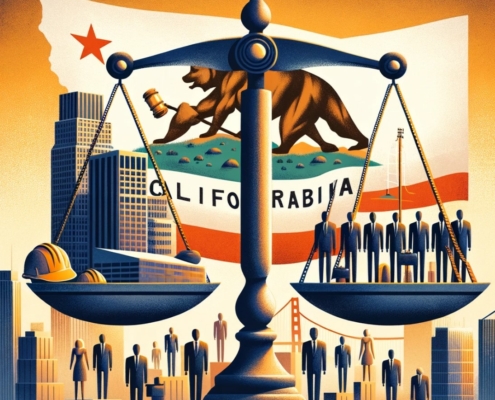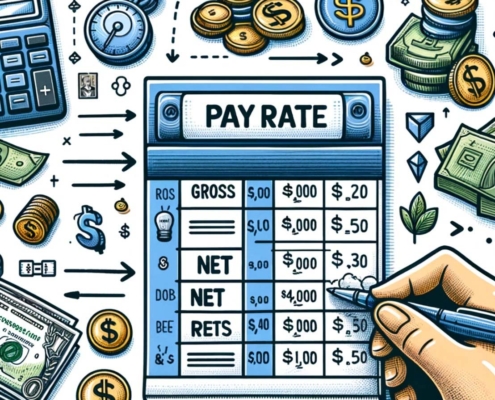15 Steps for companies, employers, and HR to respond to a sexual harassment and discrimination complaint.
When faced a company or employer faces a sexual harassment or discrimination complaint, learning the procedure on how to respond to the complaint may protect the complaint from a lawsuit.
By Douglas Wade, Attorney
Email | Call (800) 484-4610
How do you respond to a harassment complaint in the workplace?
Complaints of discrimination and sexual harassment in the workplace have become more and more common, and every day the media reports new allegations across industries: technology, media, venture capital, law, finance, entertainment, and more.
After an employee complains about discrimination or harassment, the employer must take immediate action to limit their liability and any negative fallout. This article will review the steps that a company, an employer, and HR can take to respond to discrimination and sexual harassment complaints. These strategies will allow employers to address allegations in the workplace as well as mitigate any resultant litigation. While an employer should consider legal and policy matters, it is also essential they have effective communication systems in place, as well as a team of legal, HR, and communications professionals who can work with management to formulate a company response.
In this article, our sexual harassment lawsuit defense attorney discusses how to respond to a sexual harassment complaint by an employee as follows:
Step 1: Get a lawyer
Discrimination and sexual harassment complaints can lead to serious liability issues for a company, which may include punitive damages that are meant to punish the employer for improperly handling any complaints. The company could face liability even if a low-level manager does not comply with the company’s policies and rules related to harassment and discrimination. It should be noted that responding to these claims is not intuitive, and many complaints demand knowledge of complex regulations and laws.
A company should involve outside legal counsel that is well-versed in handling these kinds of claims. Counsel can offer guidance on how to comply with legal requirements when addressing the complaint as well as help the company figure out whether an early resolution is possible or advisable.
With the help of a lawyer, the company can take the necessary steps to make sure all communications with Board members, executives, and employees are protected under attorney-client privilege. To protect this privilege, communications with the company’s lawyer should be limited to those people with a legitimate need to know. The subject line in such emails should be: “Confidential and subject to attorney-client privileges.”
Step 2: Let the Board of Directors know about the complaints
It is possible that members of the Board of Directors can offer helpful advice with regard to complex sexual harassment complaints. In fact, they may have experience assisting other companies with such matters. Also, Board members do not like to be surprised with this kind of complaint, certainly if it shows up in the news before they even heard about it.
Therefore, when an employee complains of discrimination or sexual harassment, and if the case is likely to attract media attention, the Board of Directors should be informed straight away.
Step 3: Treat the complainant with respect
It can be very difficult for an employee to make an allegation about discrimination or sexual harassment. He or she may fear the consequences of speaking up, as well as the effect the complaint will have on the workplace. The employee may also worry about losing their job as a result. It is important, therefore, that the employer show understanding, respect, and concern. Managers and employees might have engaged in misconduct or violated company policies, and the employee may be legitimately concerned and upset about their behavior. The employer should thank the employee for raising the issue and take immediate action by opening an investigation. Employees who see the company taking complaints seriously are more likely to accept an internal resolution to the complaint and are less likely to file a lawsuit.
Step 4: Thoroughly and quickly investigate the complaint
All complaints should be investigated fully, even those that may at first appear meritless. By not treating a complaint seriously, an employer may make the problem worse, as well as the company’s liability.
An investigation should be performed by an individual with the appropriate experience and training who has the ability to be impartial and neutral. This means they should not have a relationship with the individuals who are involved in the complaint. When needed, legal counsel should advise on difficult credibility or evidentiary issues that may arise in the course of the investigation.
The investigator should formulate a plan for analyzing the behavior at issue, preferably in association with legal counsel. The following are some basic steps for forming this plan:
- Determine the proper scope of the investigation
- Interview the complainant
- Interview the alleged harasser
- Interview any witnesses
- Review memos, emails, and other communications
- Review the parties’ personnel files, including any prior write-ups or disciplinary issues
- Consider how to assess credibility and deal with conflicting reports
- Assess whether the initial scope of the investigation should be broadened
- Take action to address the issues raised, which may include discipline and training; these should be documented
- Determine the kind of report that should follow
The following are some tips for constructing an investigation into a sexual harassment or discrimination complaint:
- Determine the scope of the investigation, which may change according to the facts presented.
- Select an investigator with good judgment and people skills. If the company does not have a neutral candidate internally, they should hire an experienced outside investigator. One useful resource is the Association of Workplace Investigators.
- If the investigation is delayed due to the company needing to hire an outside investigator, the reasons for the delay should be recorded. If there is litigation down the road, the company may need to explain why it did not begin the investigation promptly.
- The investigator should work with legal counsel from the get-go.
- The investigator should look over company procedures or policies concerning harassment and discrimination. These procedures and policies are usually in employee handbooks. They may indicate who is responsible for investigating complaints and what the approximate timelines are. An employer does not want to make their situation worse by not following their own policies.
- The complainant should be assured that the complaint is being taken seriously, and that they will not suffer any retaliation for bringing it to management’s attention. If the employee has any concerns about retaliation, they should raise them with the investigator immediately so that they may be handled.
- The accused should not speak to the complainant about the complaint and should not engage in retaliatory behavior. If the accused does not follow these instructions, the employer should take immediate action. Employees and executives are regularly terminated during investigations for violating these instructions.
- The U.S. Equal Employment Opportunity Commission (EEOC) offers examples of questions that may be useful in questioning the employee and any witnesses.
- The investigator should keep an open mind when collecting and analyzing information. They should not arrive at a conclusion until all the data has been gathered and assessed.
- The employer should encourage everyone involved to keep the matter confidential. However, he or she should avoid issuing mandates in this regard, which may result in National Labor Relations Board complaints about employees’ ability to voice workplace concerns.
- At the conclusion of the interview, the complainant should be asked what they hope will happen: “What is your ideal solution to this situation?” While the company is not required to follow through with unreasonable requests, some suggestions may be helpful, such as asking for a transfer, time off, or additional training.
- It is important to be fair. The investigation should be balanced and evenhanded.
Step 5: Take action during and following the investigation
A complete investigation into discrimination or sexual harassment takes time, and it may be necessary for the employer to act immediately on behalf of the employee who raised the complaint. Depending on the circumstances, it may be appropriate to implement protective measures such as the following:
- Putting the alleged harasser on unpaid or paid leave until the investigation is complete
- Permitting the complainant to take paid time off while the investigation is in progress
- Changing work assignments so that the complainant and alleged harasser do not work together
- Making sure that all supervisors are aware retaliation is prohibited
After the investigator has reviewed all relevant information and establishes credibility to the extent that they can, he or she should try to form a conclusion. These conclusions should be connected to a determination of whether the company’s anti-discrimination and anti-harassment policies were violated by the misconduct. In general, harassment policies prohibit misconduct that may not fall within legal definitions of discrimination or harassment. For instance, while an inappropriate joke may not legally qualify as harassment, the company’s policy may nevertheless prohibit it.
If an investigator ties their determination to legal concepts by saying the employee in question engaged in discriminatory behavior, or that their conduct was sexual harassment, this may lead to legal issues. Their assessment may be inaccurate according to legal standards and may even be argued to be an admission of liability in a potential future lawsuit. Thus, most conclusions will say that the company’s policy was violated or not violated.
If the investigator determines that inappropriate conduct occurred and a company policy was violated, the company should take the proper disciplinary action. Depending on the seriousness of the situation, the appropriate discipline may include counseling, a warning, impact on future compensation increases, impact on bonus, suspension, or immediate termination. It is important that the employer document the discipline enacted, but details about the investigation should not be placed in the employee’s personnel files.
At this point the complainant should understand that the investigation is finished, and they should be informed of the results. The company should be sure to amend any inappropriate action taken against the victim, such as an unfair performance rating or compensation treatment. An apology may also be appropriate.
Even in circumstances where the investigator assesses that no violation of company policy occurred, facts may indicate that the workplace could use discrimination and anti-harassment training, in addition to reminders of the company’s procedures and policies. Those who behave with questionable judgment may need personal training meant to encourage proper etiquette and behavior, as well as convey the consequences of further misbehavior.
Step 6: Adopt an anti-harassment and anti-discrimination policy
Hopefully, a company already has a well-crafted anti-discrimination and anti-harassment policy, which many states require by law. If an employer does not have such a policy, or if the policy does not address potential issues fully, the employer should be sure to adopt or edit their policy.
Usually, an anti-harassment and discrimination policy is about two to three pages long. HR consultants and experienced employment attorneys can provide samples. A good anti-harassment policy will cover the following issues:
- The employer’s zero tolerance policy for all forms of discrimination, harassment, violence, or bullying in the workplace
- The definition of sexual harassment and other types of discrimination (based on age, race, color, national origin, religion, disability, etc.)
- Examples of prohibited conduct
- Rights of employees to complain about discrimination, harassment, and retaliation
- Details of how to report complaints, and to whom
- The company’s commitment to investigate all claims
- The promise to keep complaints confidential
- A ban on retaliatory behavior
- Modes of discipline that may be implemented if a policy has been violated
- Federal and state remedies available to employees
An employer is advised to distribute this policy every year to all employees.
Step 7: Cooperate with government agencies
According to the EEOC, employers are strongly advised to investigate harassment complaints immediately. The EEOC or other state agencies may perform their own investigations in relation to employee complaints, usually after an employee submits an administrative ‘charge’ that accuses the company of discrimination.
If government agencies like the EEOC become involved in the investigation of a complaint, an employer must cooperate. The government agency will probably demand a response to the complaint and the production of pertinent documents, including those concerning personnel actions. This cooperation should be managed by legal counsel so that there are no problems with potential litigation in the future.
The EEOC offers a voluntary, free mediation service that is available to both parties. Should both parties agree to take part, the EEOC will usually extend the deadline for the company’s written response. This mediation is a confidential negotiation and settlement process led by experienced mediators. It usually takes place at an EEOC office, and it is an early chance to resolve the complaint. If the agency does not make this offer of mediation, it will typically agree to lead one if both sides consent.
Step 8: Assess whether the complaint can be resolved via arbitration
If there is the threat of a lawsuit, the company should see whether there are any possible arbitration agreements. There are negatives associated with arbitration, including the possibility of paying an arbitrator’s fees. However, a company can benefit from the use of an arbitrator in that there is less publicity associated with the dispute, a less formal and faster process, and an experienced decision maker who is less likely to be biased from previous employment experiences – as might happen with a juror.
There may be arbitration provisions present in employment agreements, hiring letters, benefit plans, employee handbooks, bonus agreements, and other documents provided by outside Human Resources divisions. While the courts have maintained that arbitration agreements are usually binding, an employer does not want to risk inadvertently waiving the agreement.
Step 9: Do not retaliate
An employer should make sure that the complainant does not suffer retaliation, even if the complaint proves to be baseless. It can be harder to defend against retaliation claims than discrimination or harassment claims, partly because juries tend to think that those who are falsely accused have a natural desire for revenge. Retaliation can take many forms, such as:
- Demotion
- Termination of employment
- Disciplinary action
- Change in responsibilities
- Compensation or benefits reduction
- Transfer of the employee to a less preferable location
- Change of work area or shift hours
- Giving a poor performance evaluation
- Isolating the employee by leaving them out of company activities
- Making the employee’s work more difficult
The courts have maintained a falsely negative post-employment reference may be in violation of anti-retaliation laws.
Step 10: Show caution with emails and texts
Once an employee files a discrimination or harassment complaint, company executives tend to exchange several texts or emails in an attempt to address the issue. However, this can cause problems with future litigation, because the concern or shock may produce negative or emotional reactions. The company may need to hand over these communications at some point in the course of litigation, and they may be used as evidence of the company’s complicity, retaliation, or bad faith.
Step 11: Save documents
After a sexual harassment or discrimination complaint is raised, a company should put in place a legal hold. This means that any relevant documents, emails, and memos should be preserved and not destroyed or deleted in the event of possible litigation. If these documents are lost, either unintentionally or purposefully, the court may punish the company. This punishment may include sanctions and monetary fines, which can harm an employer’s ability to defend itself against the complaint in court.
Step 12: Make a claim to the company’s insurance
Many employers have EPLI, or Employment Practices Liability Insurance, which may cover discrimination or sexual harassment claims. However, it is important that the company quickly inform the insurer of the claim, or the company risks being denied coverage.
It is best to notify the insurer of the claim after legal counsel has reviewed the policy. The insurance company may put in place restrictions or demand approval of any arbitration or litigation counsel. In general, the company will have to cooperate with any insurance company that provides claim coverage.
Step 13: Create a media strategy
Thanks to the existence of online court dockets, reporters can now access litigation filings. This means that a newly filed lawsuit will show up on a court site and be visible to the media and press. It is possible that reports of the lawsuit may circulate quickly, even before the company has been served.
A company should have an experienced PR director or spokesperson who can release planned company statements to the press. The plaintiff may use these statements to show malice or bad faith, so these should be carefully prepared and reviewed.
Step 14: Analyze the impact
A company dealing with harassment or discrimination complaints may face many consequences. The company’s Board of Directors, CEO, and outside counsel should think about these issues throughout the investigation. They should consider the following questions, among others:
- Does the claim reflect a cultural problem at the company? How should this be addressed? Would training be a solution?
- Is the claim a one-off allegation or are there likely more claims like it?
- How will customers, vendors, recruits, and other third parties react if the complaint goes public?
- If the issue goes to arbitration or litigation, what legal costs and fees should be expected?
- Is it best to try for a quick settlement?
- Will the company’s insurer take part in the settlement or litigation defense?
- If the company is in the middle of a merger or acquisition, does it need to disclose the complaint to the possible buyer?
- If the company is in the middle of fundraising from investors or venture capitalists, does the claim need to be disclosed? How much, and when?
- If the company is competing to hire employees, will questions about publicity need to be addressed during recruitment?
- What communications should be made to employees if the complaint goes public?
It can be a tricky and sensitive matter to decide what to communicate to employees. There is the issue of employee morale, as well as confidentiality and company liability to consider.
Step 15: Include these provisions in a settlement agreement (if applicable)
Should the employer choose to settle the discrimination or sexual harassment complaint, it is important that the settlement agreement is legally enforceable and well-crafted. Some key terms to include in a settlement agreement are:
- Whether the complaining party continues their employment or resigns
- The consideration payable to the complaining party (installments payable over time, all cash up front, non-monetary terms, etc.)
- A complete release and waiver of all claims, known and unknown, against the company, directors, employees, shareholders, and agents
- An obligation of the complaining party to not engage in future disparagement about the company and its employees, shareholders, officers, directors, and agents
- Any obligation of the complaining party to keep the terms of the settlement confidential
- The method for resolution of any disputes under the settlement agreement (usually, the company will have the disputes be handled through confidential binding arbitration)
- A covenant of the complaining party to never bring any action or lawsuit related to the released claims
- A disclaimer of any liability or admission by the company regarding the underlying allegations
- An integration clause that states that the settlement represents the agreement and understanding of the parties and overrides any prior agreement or understanding with respect to the settlement’s subject matter
- A statement that the agreement does not waive claims that cannot be legally waived
- A provision for dismissal and withdrawal of claims with prejudice so that a similar claim cannot be filed again (in the event of litigation)
- The employee’s waiver of any right to future employment with the company
Have a quick question? We answered nearly 2000 FAQs.
See all blogs: Business | Corporate | Employment
Most recent blogs:
































